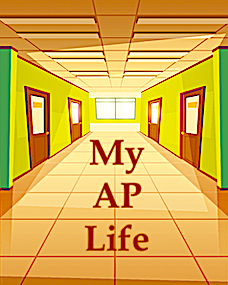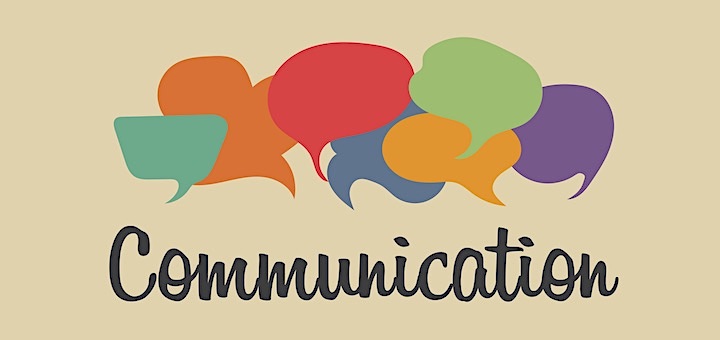The Best-Led Schools Put Communication First
A MiddleWeb Blog

With a wry smile he told her there were three things that could make or break a marriage – communication, finances, and communication.
Of course, there are other factors that can make or break a marriage, but his emphasis on communication was meant to help her understand that they should always be talking to one another…about their hopes and dreams, their fears, their finances, their lives together.
This is how he and I have operated in our 23 years of marriage. We talk about everything from the most trivial events to our deepest dreams and fears. And when we feel like we aren’t talking enough, we make time to quietly go off by ourselves just to talk. I truly believe that it is how our marriage was able to survive multiple deployments, military schools, unwise financial decisions, and more.
Good communication allows a relationship to grow and thrive even in the worst of times. Conversely, the lack of communication breeds resentment, misunderstanding, and mistrust. Which brings us to school.
Schools and Communication
Just as in any healthy relationship, good communication is needed between a school and its many stakeholders. When analyzing the stakeholders of a school, three distinct groups emerge: the school’s Building Leadership Team (BLT), the school’s faculty and staff, and the school’s parents and local community.
Communication will look different within each of these groups. What is discussed and shared in one may or may not be shared and discussed in others. It is the responsibility of school leaders to navigate these sometimes choppy waters of communication, ensuring that all parties get the pertinent information and assurances they need to help make decisions about student and school success.
Communication within the BLT
A school’s BLT usually consists of teacher leaders, the administration, instructional coaches, and perhaps several parents. This group is tasked with assisting in making decisions about some of the day-to-day running of the school such as planning school events, voicing and addressing the collective concerns of colleagues, and creating culture-building activities for both faculty and students.
This group of leaders is usually privy to some sensitive information that cannot or will not be shared with the rest of the staff, but needs to be shared among ourselves so that sound decisions can be made about the school.
Regular BLT meetings where the appropriate information is disseminated and discussed – usually after a principals or administration meeting – helps this group stay abreast of the state of affairs at the school and within the district. These regular meetings also help us plan next steps that address some of the concerns or issues that have arisen.
When communication is flowing, this group can change the culture and climate of a school and bring about true growth for faculty and students. When this kind of communication is lacking or stifled, the BLT becomes a leadership team in name only, unable to make anything happen in the school.
Communication with faculty and staff
If you have been in education for any length of time, you are quite familiar with one of the banes of education…the dreaded faculty meeting. I know I have seen plenty of memes about emailing information instead of meeting about it. Yet I’ve also heard teachers complain about the inordinate amount of emails they receive on a daily basis as administrators, instructional coaches, and other staff try to disseminate information equitably.
This is where weekly faculty newsletters or memos can come in handy. A faculty and staff newsletter can help distribute information from multiple parties.
Inviting instructional coaches, librarians, counselors, lunchroom staff, etc. to contribute to a section of the newsletter allows for important information to get to faculty and staff without them being inundated by emails. The key is to provide as much information as possible, as concisely as possible, in that single, comprehensive document – including any upcoming events, important reminders, significant news, and a week-at-a-glance informal calendar.
Sending out the faculty/staff newsletter at the same time each week creates a positive expectation that we’ll all be informed. It also allows faculty and staff to align their plans with what is happening at the school that week. I send mine out Sunday evenings at 6 p.m. to allow faculty and staff to use it to help them plan for the upcoming week.
Keeping faculty and staff in the loop through effective and timely communication helps them feel more connected to the school. Using weekly newsletters/memos to provide that effective and timely communication also allows administration to limit the face-to-face faculty meetings to once a month, giving faculty and staff more time to spend preparing for student success.
Communication with parents and community stakeholders
It is no secret that schools need to build good relationships with parents and community stakeholders in order to have the support they need for student success. The best way to build these relationships is through, you guessed it, effective and timely communication.
Just as faculty and staff like to know what’s going on at school (preferably before it happens), parents and community stakeholders like to be in the know when it comes to school news. This allows them to participate, sponsor, and/or support their local school. Weekly callouts and/or monthly newsletters from the school’s administration help parents feel connected to the school and what is happening in their child’s school life. Today, email and other technologies make this much easier to accomplish.
Frequent communication can also improve parent engagement in a student’s academic success. Encouraging teachers to communicate at least weekly with parents allows parents to monitor their child’s academics while also being able to contribute to the classroom if and when needed.
Historically, elementary schools have done this quite well. However, in recent years, secondary school parents have called for more communication from middle and high school teachers as well. They want to continue their involvement with their child’s education as they progress through school.
Collaboration among teachers at the secondary level, especially core teachers, to create a newsletter or document to send out can alleviate the stress of one teacher handling all the communication or parents being overwhelmed by the amount of information coming from several different sources. It takes some organization and leadership to get this all going, but the payoff is tremendous.
Communication, communication, communication
My daughter has been married for 5 years now, and whenever she and her husband are going through a rough patch, we simply remind her of that one simple thing…all relationships begin and end with communication.
Creating a dynamic communication model so that information flows effectively among administration and the BLT, faculty and staff, and parents and community stakeholders helps nurture a culture and climate of shared leadership where all voices are heard and appreciated – and where the rough patches are easier to smooth out.



































